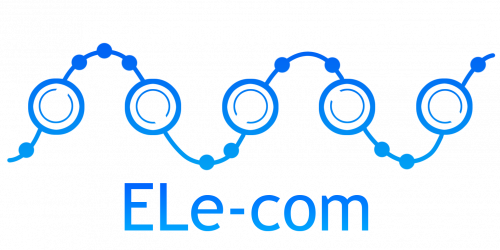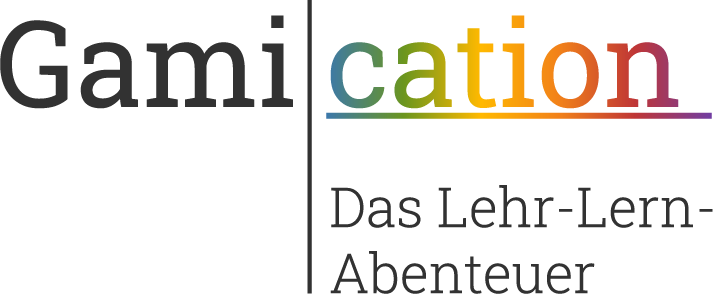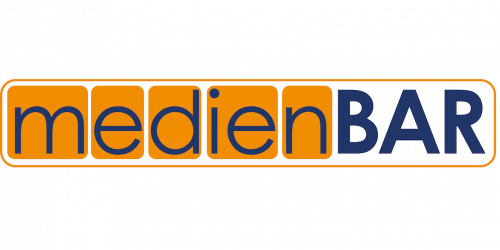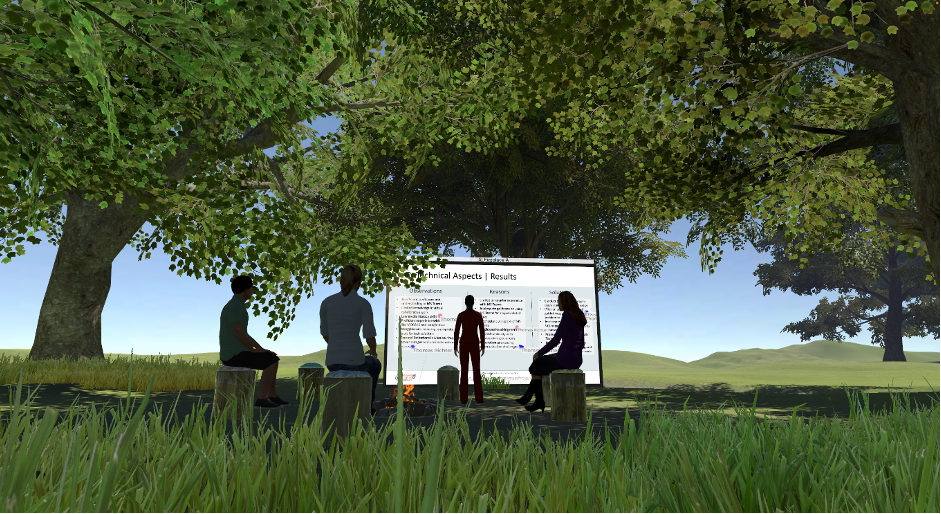Virtual teaching collaborations – For an open, digital learning world
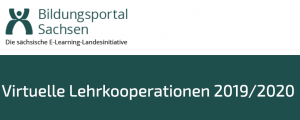
On December 31, 2020, the joint project “Virtual Teaching Cooperations” at the Media Center ended, which included five sub-projects at various Saxon universities:
- Initiative to develop a multilingual teaching and learning environment (Prof. Dr. Kirstin Hoffmann, West Saxon University of Applied Sciences Zwickau and Dr. André Matthes, TU Chemnitz)
- An open, digital learning world for virtual teaching cooperation using Building Information Modeling (Prof. Dr. Karsten Menzel, TU Dresden and Prof. Dr. Ulrich Möller, HTWK Leipzig)
- Standardization in digitized cross-university study programs (Dr. Jens Schulz and Ruben Wittrin MA,
Mittweida University of Applied Sciences) - Cooperative teaching and learning in the age of digital transformation: Establishment of a cross-course and cross-location media didactic concept for the Master's program "International Management" (Prof. Dr. Thorsten Claus and Dr. Stefanie Seifert, TU Dresden)
- A case for two universities: Development and testing of a framework for didactic case study development for cross-university group work in virtual space (Prof. Dr. Anne-Katrin Haubold and Prof. Dr. Ronny Baierl, HTW Dresden and Prof. Dr. Eric Schoop, TU Dresden)
The media center under Prof. Dr. Thomas Köhler was responsible for the coordination of the project. The aim of the project was to pilot a cross-university teaching network taking into account didactics of collaborative teaching and learning: ideally in a specialist domain and, if necessary, between different types of universities. This also involved solutions for cooperation with international partners. In this regard, a focus was placed on research-based design approaches in the context of the international structured doctoral program "Education & Technology". Valuable for the implementation were the experiences from international cooperation in the context of teaching cooperation around doctoral students and also at the interface with so-called eScience, in the form of research-based teaching cooperation. The effects on the Saxon university landscape arise from the reusability of the design approaches of cross-university teaching networking.
Furthermore, the project was intended to promote the non-subject-specific qualification of teaching staff to strengthen the effectiveness of students' self-management in online or blended learning scenarios. Finally, in individual cases, Saxony-wide preparatory courses and online self-assessments were supported using and creating OER.
The results of the five sub-projects presented with a focus on domain-specific teaching cooperation versus methods of teaching cooperation are easily transferable and therefore offer good potential for subsequent use. In order to promote this potential in the sense of sustainability, it is particularly necessary to adopt individual measures in the design of curricula and target agreements at universities. Since responsibility located exclusively at the level of the individual degree program cannot be considered to be very effective, it is recommended that it be included in the recommendations for action for the Saxon higher education area in the form of strategic goals.
Surprisingly, each sub-project approached and promoted a different aspect of the development of “virtual teaching cooperation” between different types of universities. Therefore, the internal communication had to be structured by the MZ in such a way that cooperation in the virtual environment is enabled, taking into account the needs, conditions and requirements of the main concept. However, communication is not always seen as an important part of the whole process. Most of the time, the focus is on how and with which means and instruments the actors must proceed. In other cases, communication is taken for granted, as it is fundamental for further action. However, it is not always clear what kind of communication the participants should have and in what form and structure this should take place in order to be successful. In summary, it can be said that it could be worthwhile to research how exactly cooperation has been established within the method-specific projects. This would give a more accurate picture of the implementation of the respective concept in practice, and aspects such as collegial (individual) cooperation and adaptability of organizational structures and processes could be determined.
During the project period, the following publications were produced by the coordination project:
Scientific articles:
Paraskevopoulou, K. & Köhler, T. (2020). Organizational models in virtual teaching cooperation – documentation and evaluation of organizational didactics in a collaborative higher education project. In: Köhler, T., Schoop, E. & Kahnwald, N.: Communities in New Media. From hybrid realities to hybrid communities. Proceedings of 23rd Conference GeNeMe; TUDPress, Dresden. Download: https://nbn-resolving.org/urn:nbn:de:bsz:14-qucosa2-728085.
Paraskevopoulou, K., Köhler, T., Haubold, A.-K., Schoop, E., Baierl, R., Clauss, A., Lange, K., Altmann, A. & Dähne, N. (2020): Organizational models in virtual teaching cooperation. Documentation and evaluation of the didactic learning scenarios of a joint project. In: Kawalek, J.; Hering, K. & Schuster, E. (eds.): 18th Workshop on e-Learning – Conference proceedings. September 24, 2020, Zittau/Görlitz University of Applied Sciences. Scientific reports, issue 134 – 2020, no. 2751 – 2766. Download: https://zfe.hszg.de/fileadmin/
NEW/Editorial-Zfe/Files/wel/wel20/Conference_Proceedings_WeL20.pdf.
Book publication:
Koschtial, C., Köhler, T. & Felden, C. (2021): e-Science. Open, social and virtual technology for research collaboration. Progress in IS Series, Berlin: Springer. https://www.springer.com/gp/book/9783030662615.



